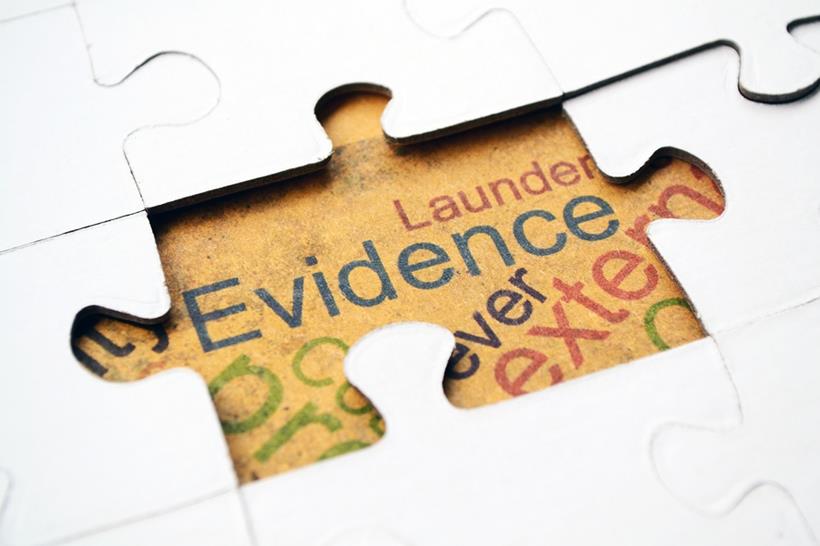
Chief Executive Officers’ (CEOs) support for electronic document and records management system (EDRMS) initiatives is usually built on compliance. That is, the records and information management (RIM) unit manager will convince the CEO either that an EDRMS is necessary to comply with a state or national regulation, or necessary to deal with a government agency or progressive commercial organisation. Rarely is it because the CEO believes, or has been convinced, that the implementation will result in a more productive organisation with lower risks.
This may be because the RIM manager was not able to speak the language of the CEO, or because the CEO had no interest in the discussion in the first instance, because they were unconsciously incompetent in the context of records management and EDRMS basics.
Whilst not pretending to be a comprehensive treatise of records management and EDRMS imperatives, what follows are my observations of what a CEO should know about the topic before deciding what level of support they should give to, and what level of personal interest they should have, in an EDRMS initiative.
Records Management Imperatives
Policy
The records or indeed, information management policy, forms the cornerstone of the initiative. Do not treat it as an exercise which needs to be completed and then forgotten. Treat it as you would a policy to protect important assets in your organisation such as people (Health and Safety Policy) or plant and equipment (Procurement Policy). A Records Management Policy is designed to protect your information assets. The policy should lay down the rules for managing information assets in your organisation. Those information assets include, at a minimum:
- Employee records
- Customer records
- Contracts
- Engineering plans
- Accounts receivable and accounts payable information
- Payroll
- Security processes and procedures
- Project documentation
- Strategy documentation
- Confidential correspondence
- Board papers
Would you, as a CEO, like to report to your board that there are no rules for governing the creation, editing, dissemination and filing of these types of documents? Or that someone else, with only a cursory glance from your management team, created the rules and that you are unsure about how well the rules relate to your vision and the strategy the organisation is pursuing to reach its vision? Probably not, so please take the issue of policy creation seriously.
Business Classification Scheme
The business classification scheme (BCS) is often portrayed as the means by which it is determined where we file records so that we can be sure that they will be kept for the right length of time to meet government regulations. This is true, but this is tablestakes. The business classification must do more than that. It must provide a simple to understand framework for all employees to file their records the same way, whether they are from finance or engineering or sales.
A BCS is just like the Dewey decimal classification system used by libraries all over the world. It is usually structured in three tiers with a top level described as “Function”. The second level is described “Activity”, the third is described “Transaction”. The first three levels are set by the business classification scheme. Below this level is where individual departments crate folders to store their files.
What you need to understand is that creating a standard filing system and – preferably – common rules for titling documents across the business creates the first opportunity for improved productivity. People are able to search for documents much more easily and people do not have to learn new ways of doing things when they are transferred in an organisation.
What you need to ensure is that your RIM manager does not suggest a BCS with 20 or more first level functions. Ten to twelve is ideal. Every extra function more than that makes it more difficult for individuals to decide where to store their records. Every extra function means that there is more likely to be an overlap of probable function that a record may be filed under. Do not accept, “Our business is complex”, as an excuse for creating a BCS with thirty functions. Send the RIM manager back to work on the BCS to create one with no more than half the number of functions.
Ensure to teach your people about the BCS and the concept of “Functions”. It is a new concept to most people and it is imperative to teach them the concept, not just the structure of the BCS.
What is a record?
Seems a simple question, doesn’t it? However, the answer to this question is often a mystery to CEOs and to employees. Take an active role in determining what a record is and therefore, what is controlled by the policy. What is a record is in part determined by government regulation. However, the major determinant should be governed by your strategy.
For example, you may hear a lot about the difficulty in keeping social media records. You may hear that the organisation needs to keep all social media records made by the organisation or made about the organisation. This is unlikely to be true. Go back to your strategy. Have someone map the social media exposure of your organisation. Have them determine which social media elements present a risk to your organisation, given the strategy you are pursuing (if they are not recorded) and evaluate the risk for its level of acceptability. Capture and record only those for which you cannot mitigate the risk if they are not recorded.
Make sure that a concerted effort is made to determine what, in your organisation, with your vision and strategy, is a record. Don’t accept the mantra that everything is a record. Then ensure what your organisation considers is a record is communicated to employees.
Records Management Maturity
Comprehending your current level of maturity with regard to records management and the level of maturity your RIM manager is suggesting the organisation should aspire to, is probably the key thing a CEO should understand before supporting an EDRMS initiative.
State Records of NSW have a very handy tool for determining both the existing level of maturity and demonstrating what is necessary to achieve a higher level of maturity.
The levels of maturity are described in Figure One.
Figure 1: Information Asset Management Maturity Model
With higher levels of maturity comes improved productivity and reduced risk. However, if the gap between your existing maturity and desired maturity is too great, there is likely to be a high risk of the implementation project not succeeding.
EDRMS Implementation Imperatives
Importance of project management, change management and skill building
You may be told that EDRMS selection is the most important activity in implementing an EDRMS. This is generally not true. Whilst it is important that the functionality of the EDRMS is matched to the desired maturity of records management, history tells us through the high failure rates of EDRMS implementations and the low adoption rates of EDRMS implementations considered successful, that other issues are more important.
Selecting the appropriate team, including consultants if necessary, with experience in EDRMS implementations and skills in project management, change management, communication and training are prerequisites for a high probability of implementation success.
Ensure your team has the budget and the skills necessary to implement a thorough and well thought out change management, communication and skill building strategy and plan. Investing at this stage makes the difference between levels of adoption of 20-40% and greater than 80%.
Functionality of the EDRMS
Learn about the implications of using the key functions of your EDRMS that improve the business processes of your organisation. EDRMSs are intelligent databases that can do a great deal more than just store data and documents.
Your EDRMS will have the ability to manage revisions or drafts of documents to provide one single record and thus a single source of truth. That single source can then be shared by a hyperlink rather than by producing multiple copies, by sending attachments. Additionally, workflow may be automated and tracked to improve turnaround times and eliminate bottlenecks. Relationships between records may be defined, which make the complete context of decision making instantly accessible now and in the future. And, of course, the addition of security and access control over who can view a record at different stages of its life.
Used well, your organisation now has a powerful tool to manage information assets with a complete audit trail of how that information is used and by whom. The simple fact of a unique record number ensures that any changes to title or storage container will not impact references or disrupt workflow.
I have just scratched the surface of what productivity enhancements and risk reduction can be availed through the functionality of an EDRMS. I have not even touched on add-on features such as scanning and automatic reading of metadata.
Conclusion
As a CEO, you need to know what benefits an EDRMS can bring. Be aware that most RIM managers will talk in features of an EDRMS rather than benefits. Get some of your business analysts involved to determine what they believe may be possible using the functionality of an EDRMS to improve productivity and reduce risk.
An EDRMS is not a compliance tool. It is a business improvement tool. It improves your business by enabling you to manage one of your most important assets; information. Implementing or improving the adoption rates of an EDRMS is an opportunity to take control of your information value chain, improving the rate at which the value increases and securing it, so that the value is retained in your organisation.







